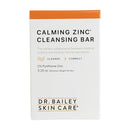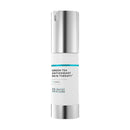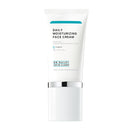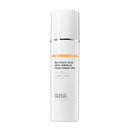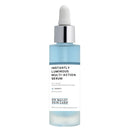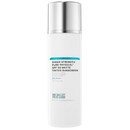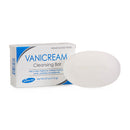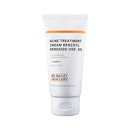What is Dyshidrotic Eczema?

Dyshidrosis is a type of eczema that includes tiny blisters on the palms and fingers that are itchy and tender.
The cause of dyshidrotic eczema is unknown, and the eczema often flares-up out of the blue. Dyshidrosis is also called pompholyx.
All About Dyshidrotic Eczema
- People with a history of atopic eczema and seasonal allergies are more prone to it.
- What are some of the symptoms of dyshidrotic eczema?
- Do people with dyshidrotic eczema have flares?
- How is dyshidrotic eczema diagnosed?
- How is dyshidrotic eczema treated?
- My 3 hand care kits are ideal dermatologist-approved skin care for dyshidrotic eczema:
- Is it possible to prevent flares in the future if you have dyshidrotic eczema?
People with a history of atopic eczema and seasonal allergies are more prone to it.
They are probably hypersensitive to something. But, most of the time, doctors and patients don’t figure out what the hypersensitivity is! Allergies to metals, such as nickel and cobalt, are often implicated. The exposure is complex, however. It can happen from working with metals, simply touching metals, or even eating foods grown in soil with high levels of the metals. You can see that sleuthing-out the exposure is complicated.
Stress has also been implicated as a trigger of dyshidrosis.
What are some of the symptoms of dyshidrotic eczema?
Deep-seeded blisters on the fingers, toes, palms, and soles.
-
The blisters are collections of fluid in the top, living skin-layer called the epidermis. These blisters are characteristic of this type of eczema; edema and swelling concentrates in the epidermis and little lakes form between cells. The lakes grow and are what you experience as tiny blisters.

Itchy or burning sensation of the skin before the blisters show up.
- The itching and burning is part of the inflammation and an immune reaction that leads to blisters.
Excessive sweating where you have the blisters.
- Excessive sweating is a risk factor that can lead to dyshidrosis because increased sweating with the inflammation leads to eczema, which will lead to bigger, better and more blisters.
Pain in the skin in the areas of blisters.
- The skin cells are stretched apart by the fluid that creates the little, blister lakes. Inflammation is also involved, and that means immune cells and immune mediators are present in the skin. The sum total of the immune reaction and fluid collection leads to itch and pain. Blisters can also lead to cracking of this thick skin. Cracks are called fissures. Skin is hypersensitive to irritation from soaps, solvents, weather, and friction when it has this type of injury.
Peeling skin on the hands and feet.
- When the blisters heal, the epidermal layer of the skin has to reform. This layer grows from the bottom out, and the damaged part gets shed as scale. Dried blisters are crusty and so there is crust, too.
- How do blisters from dyshidrotic eczema look different from "regular" blisters?
The blisters of dyshidrotic eczema are smaller, very itchy and numerous. A regular blister is similar, except you know that you got it from rubbing or friction, such as an ill-fitting shoe, and it is usually solitary. Friction-induced blisters hurt and don’t typically itch.
Do people with dyshidrotic eczema have flares?
Yes. This type of eczema is capricious. Remission is usually followed by flare-ups. Every person is different in how severe the flare is, how long the remission is and how often it happens. Since we don’t know the cause, there is a seemingly random nature to dyshidrosis.
How is dyshidrotic eczema diagnosed?
Diagnosis is based on the physical exam of the skin. It also involves exclusion of other, blistering conditions of the hands and soles such as allergic contact dermatitis, fungus and an id reaction (sympathetic palm/sole blisters to a rash on the body that occurs somewhere else).
How is dyshidrotic eczema treated?
We typically treat this type of eczema with topical cortisone creams and ointments. This medicine is used to treat the inflammation. Sometimes, systemic cortisones in the form of pills or a shot are used. Importantly, hands must be protected from irritation while they heal. If not, irritant hand-eczema will lead to two types of eczema and make symptoms worse.
Even in the best case, hand-skin suffering from dyshidrotic hand eczema can take up to six months to fully heal. During this time, hand skin must be treated with care and protected from irritation:
- Only use gentle cleansers on the skin.
- Moisturizers should be applied after washing and toweling skin dry.
- Cleansers and moisturizers should be hypoallergenic and deeply hydrating.
- Gloves need to be worn when doing any hand work that will put damaged hand-skin in contact with caustic and irritation things – think washing dishes, painting, etc.
My hand care kits are ideal dermatologist-approved skin care for dyshidrotic eczema:
Dry Hand Skin Repair Kit |
|
Hand Care Kit for Naturally Busy Hands |
Is it possible to prevent flares in the future if you have dyshidrotic eczema?
Only if you figure out what caused them (an allergy to nickel you can avoid, lots of stress you can control, etc.)
Reference:
Guillet, Marie H MD, et. al., A 3-Year Causative Study of Pompholyx in 120 Patients, Arch Dermatol., 2007;143(12):1504-1508.


